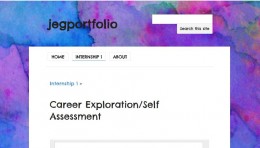Summary
Patty Rogers – Deep Run High School
Students in “Teaching For Tomorrow” classes were challenged to create electronic internship portfolios that could be customized to contain information and to control access to sensitive documents. ‘Google Sites’ was chosen as the web page editing software due to its widespread availability plus its ability to allow page-level permissions to limit access to both pages and private documents.
The ‘work in progress’ portfolios were shared with the course instructor, other class members, and students’ cooperating internship teachers. Once the web pages were created, students used them continuously throughout the internship to serve as online repositories for items that previously had been housed in physical notebooks. Student web sites were evaluated according to a teacher-created rubric that focused on items such as ease of navigation, essential content contained, and limited access to sensitive conte
TIPC Ratings
Not Applicable
Approaching (4)
After exploring other web page options, students used Google Sites to communicate and collaborate with members of their class, their classroom teacher and their supervising HCPS teacher(s) for their internships. Each student’s individual Google Site contained Google Documents that could readily be controlled as to who could view the contents of each document. Each student created and maintained their own Google Site offering a 21st Century alternative to a traditional notebook of essential documents
Approaching (4)
Students learned to create their own web page and to control who could access the page as well as specific documents contained within each page. They had to make decisions as to who should have view access and then to enable the ‘page level permissions’ to allow or deny access to the documents on each page. As a result, students had to think critically to solve real world problems.
Not Applicable




